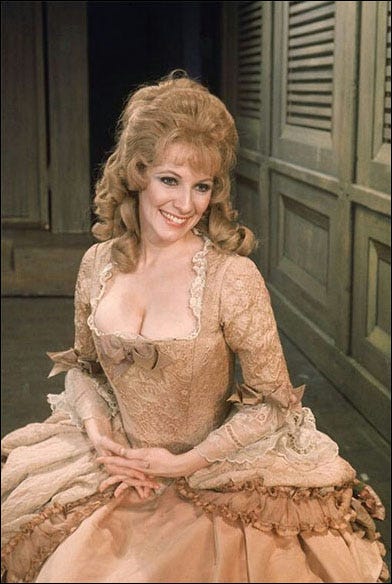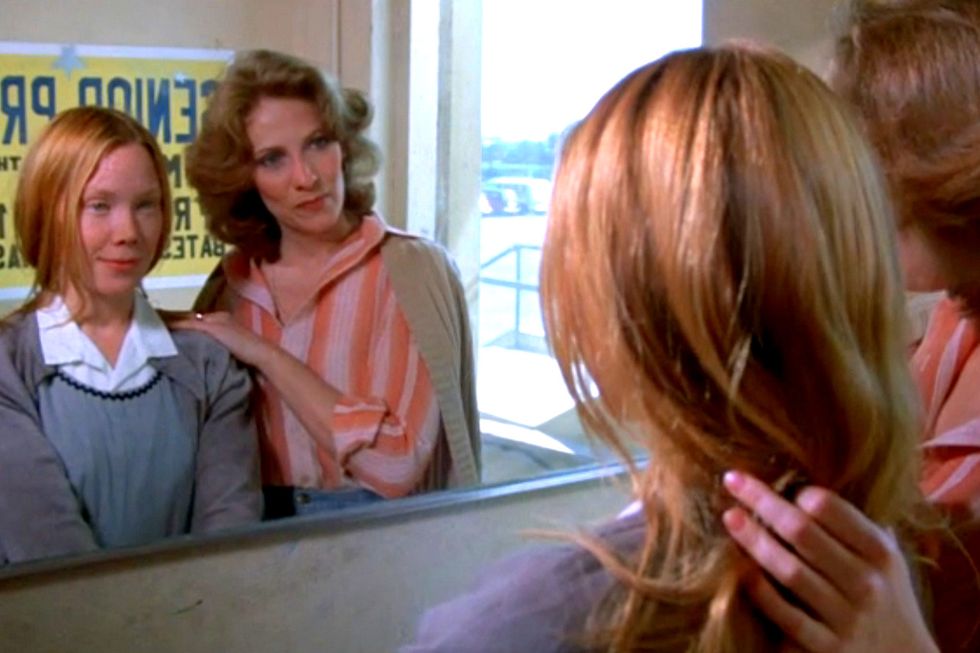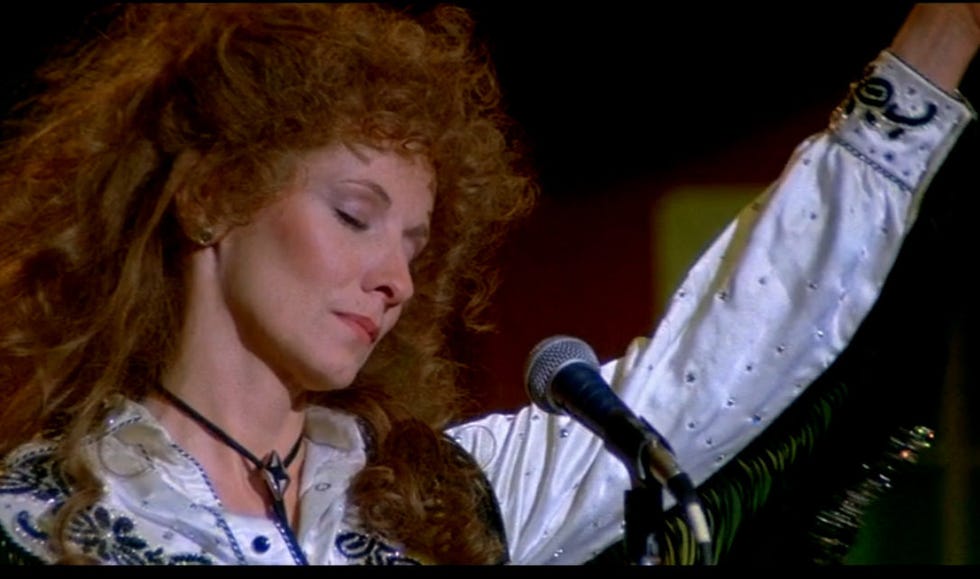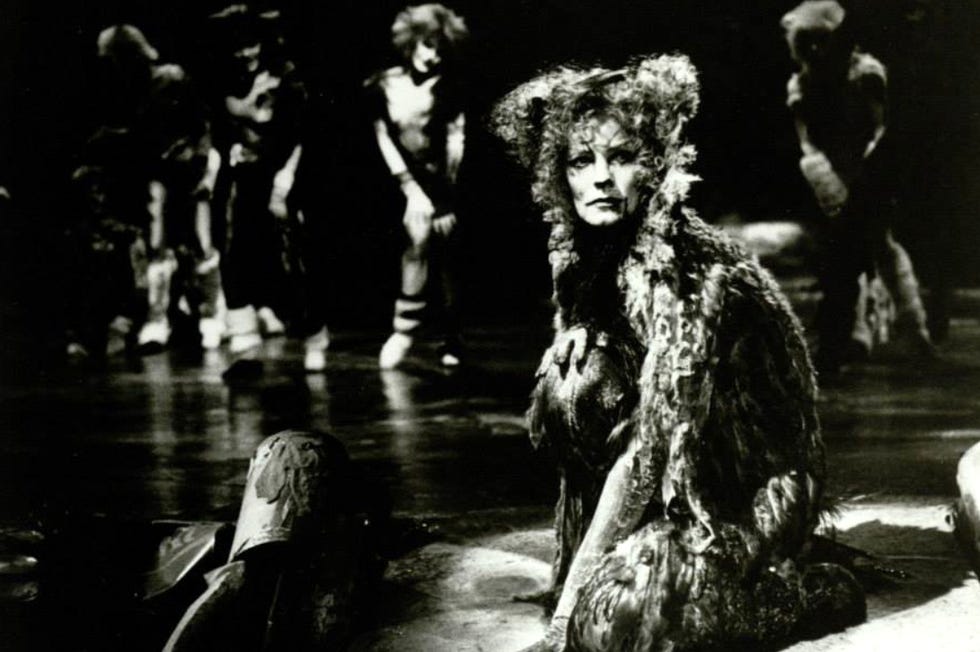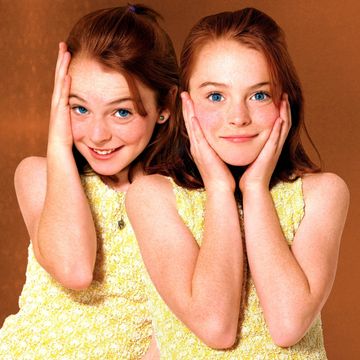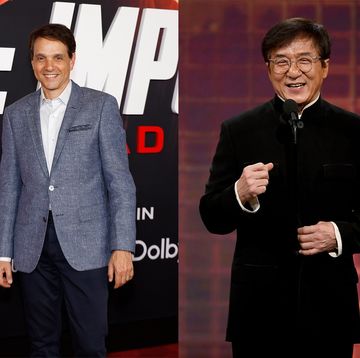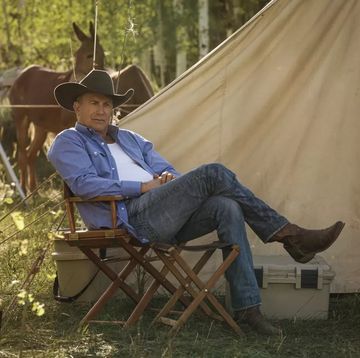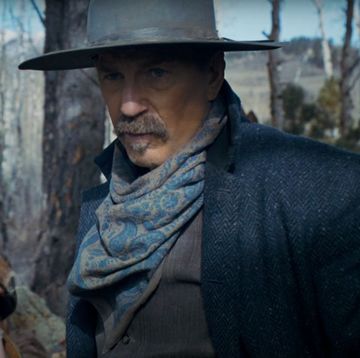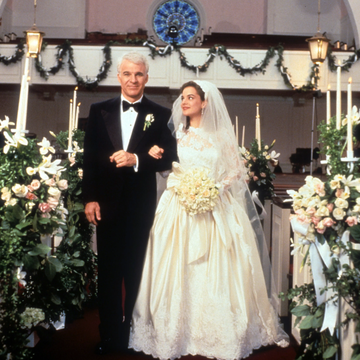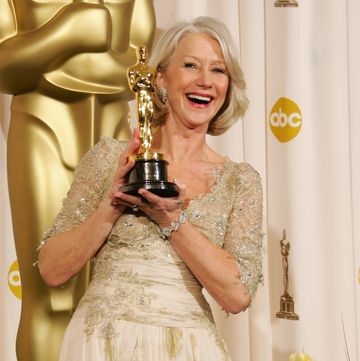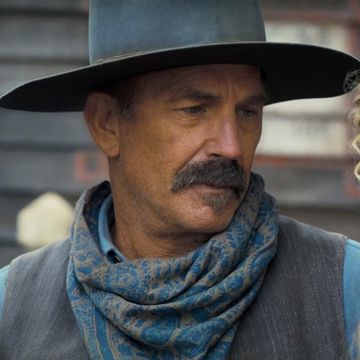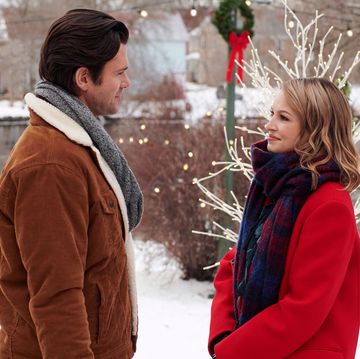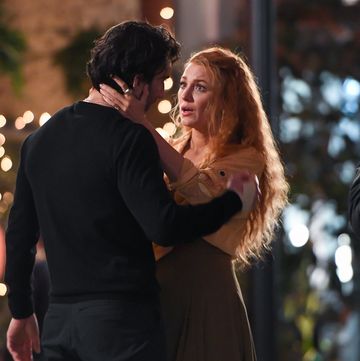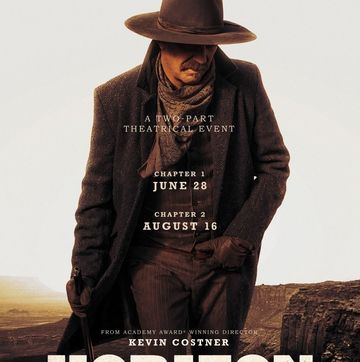Thank you to Mark Spearman for this amazing interview of a performer we both love dearly…and thank you to the beautiful Betty Buckley for sharing yourself with us! —Ree
By Mark Spearman.
A precious few performers soar on stage as well as in movies, TV and music. Even fewer rise to earn the term “icon.”
One who clearly deserves that moniker is Betty Buckley. “The Voice of Broadway” is one of theater’s most respected actresses, with two Tony Awards, most famously for “Cats.” (No one does “Memory” as the feline Grizabella like Betty. Hearing her perform it live should be high on your Bucket List).
On television, she was beautiful, nurturing and strong stepmom Abby Bradford in “Eight is Enough” and had memorable turns in “Oz,” The Pacific” and “Getting On” for HBO, as well as recurring roles on such network shows as “Law & Order: SVU” and “Pretty Little Liars.”
She’s been in films directed by Brian de Palma, Woody Allen, Bruce Beresford, Roman Polanski, Lawrence Kasdan and M. Night Shyamalan. (If you ask me, she should have gotten as Oscar for hard-drinking, tempestuous country singer Dixie Scott in “Tender Mercies.” And, I remain puzzled why her sweet, supportive gym teacher Miss Collins in “Carrie” had to die – more on this later).
The big news about Betty is her new album, “Ghostlight,” a collaboration with legendary musician, producer and childhood pal T Bone Burnett. Her 16th solo album defies categorization, and it is an amazing recording. I heard her perform several songs from it in concert recently (Additional, Suggested Bucket List Item: Attend Betty Buckley Concert Performance).
On an even more subjective note, I’ve had the opportunity to visit with her personally a few times over the years (as well as chat often on Facebook and Twitter) about everything from politics to pets to the finer points of riding competitive cutting horses, and she has the added bonus of being a genuinely nice person – down to Earth, kind to her fans, and, at heart, an authentic and flinty Texas cowgirl.
Recently, we spoke by phone on a particularly chilly day on her ranch near Fort Worth. Here’s what we talked about…
Q – You’ve said that your new album “Ghostlight” is the most personal and true to who you are – why?
A – T Bone and I are both from Texas and have been friends since we were teenagers, and it just has this feeling of Americana about it, a very large, atmospheric landscape. The collection of songs is very eclectic. There are some songs from Broadway and the Great American Songbook, but also music from some bands of the sixties and by contemporary singer-songwriters. The music is romantic and provocative with an undeniably haunting atmosphere. Every song has a particular resonance for me.
Q – What’s your history with T Bone, and how did the album come about?
A – When we were growing up in Fort Worth, my mom, Betty Bob, and T Bone’s mom, Hazel Vernon, were friends. The two of them decided that there should be an archive of the songs I’d been singing with a jazz trio at the Casa Del Sol Supper Club in town, so we arranged to make a recording in T Bone’s own studio (he’d had a studio since age 17). That recording, when we were both 19, is the first recording of my voice. Nearly four decades after it was recorded, it was released by Playbill Records and Sony BMG as “Betty Buckley 1967,” which the publisher of Playbill Phil Birsh referred to as “the first album you never had.”
A couple of summers ago T Bone called and asked me to come to LA and make a new album with him. We’d been talking about it for years. So I flew to Los Angeles with 75 board mix songs that I’d been singing and had always loved. We narrowed those down to 12, including a couple of new songs T Bone wanted me to learn. Two months later, we were in the Village Recording Studio making Ghostlight.
Q – Can you explain the origin of the name Ghostlight and what it means?
A – After we picked the songs, T Bone envisioned the album as “a club in 1950s Los Angeles frequented by dangerous men and glamorous women who go there to listen to this singer and her band telling true stories about life in the city.” He called the music a new genre, “crime jazz.” He said, “It’s when the theater is dark!”
I said “The Ghost Light. It’s the tradition in theater where a bald light bulb on a stand is placed in the theater after a performance, to keep the ghosts company.”
And he said, “That’s it! We’ll call it Ghostlight.”
Q – Which song on the album is the most personal to you?
A – “Comin’ Back to Me” by Marty Balin of Jefferson Airplane is my favorite. I’ve loved that song since I was 17 years old. I used to play the album over and over. I had to repurchase the record because I played it to death and wore out it out twice. That particular song, it’s just really resonant and dreamy.
Q – How did you get your start as a performer?
A – My mother, who had been a singer-dancer, had an extensive record collection, including Broadway cast albums, and I learned to sing by listening to all the great lady singers. I was desperate to be in “Bye Bye Birdie” when I was a kid. I could do the whole show.
At 15, I made my professional debut as Dainty June in “Gypsy.” Later that summer, I danced in “West Side Story.” There wasn’t a role for me – I danced the part of Baby John’s girl at the “Dance at the Gym” – but I memorized the entire score. I could sing everyone’s part, the orchestrations too. I did two summers at Six Flags Over Texas in the Campus Revue and later the Crazy Horse Saloon. In the summers following I did some great shows at Casa Manana in Fort Worth and for two summers I was performed several shows a day at Six Flags Over Texas.
On Broadway in 1776
Q – Is it what you always wanted to do?
A – When I was 11, my mother took me to see “The Pajama Game” at a local theater. I was smitten by the song and dance “Steam Heat” with the original Bob Fosse choreography – the black bow ties and derby hats and all. I knew when I saw that number what I was going to be doing for the rest of my life, whatever “that” was. Later I learned it was the Musical Theater. I have been a devotee since that moment.
My bedroom was on the back of the house my father built on the West Side of Fort Worth. There was a big cattle pasture and a windmill, and I remember standing there looking out over the plain, and I had a vision of how my voice would sound one day, and who I would grow up to be, and my how my singing would affect audiences. I just knew that someday I would sing on Broadway.
It was a calling. I had such a big voice when I was a little girl. I had sung in church choir and the elementary school chorus and they always put me in the back row because my voice had this quality that just cut through.
The choir teacher used to tell me, “Blend in, Betty Lynn. Blend in.”
Q – You were cast at Martha Jefferson in the Broadway musical “1776” at age 21. What led to your landing that part at such a young age?
A – I had been Miss Fort Worth and runner-up for Miss Texas, and that led to my being asked to perform with the Miss America Pageant in Atlantic City. Later on I went with the Miss America troupe on a USO Tour to Japan and Korea. I was signed by an agent who saw my guest performance on the Miss America telecast at the beginning of my junior year in college. Then I went back to finish school.
The summer after I graduated from Texas Christian University, I went on the USO tour. After experiencing the results of war first hand (We visited all the intensive care units where young American soldiers were dying) I lost all incentive to move to New York.
But my agent kept calling me to encourage me to come to the city. He invited me to come to Dallas and wanted me to see a touring trade show that his clients were doing. During the performance they called me up from the audience to sing with the band. The audience loved it, and the buyer for the show asked me to tour with the show on weekends. I joined them in Atlanta, Chicago, San Francisco and the last stop was Philadelphia. I pretended, in each city, to be a local girl they brought up from the audience to sing.
So after our Philadelphia show the agent convinced me to train into New York from Philly and give New York a chance for six weeks. He had another industrial show for me. But on the day I arrived in New York I called him, and he sent me for another audition. I raced there. I was the last girl to try out on the last day of auditions for the role of Martha Jefferson in the Broadway musical “1776.” But I didn’t know that at the moment of my audition.
After I sang for them they asked, “Who are you, and where are you from?” I said I was Betty Lynn Buckley from Fort Worth, Texas. “When did you get into town?” they asked. “Today,” I said.
The producers were saying, “It’s like a movie! It’s like a movie!” Afterward, the stage manager asked me if I knew that the audition was for, and I said no.
“This audition is for a big Broadway musical, ‘1776,’ and if you get this part you’re the luckiest little girl I’ve ever met.”
Q – You built a great repertoire of roles across stage, film and TV at a time when it wasn’t particularly easy to move among the three. How did you do it?
A – Yes, there used to be a real prejudice about theater people versus movie people, and a feeling about television as being less. These days things have changed. Some of the best work out there is being done on television.
In actuality, my life has really been about wonderful people opening doors for me. I did some voice work on three films made by Brian De Palma and then he cast me as Miss Collins in “Carrie.” That was my first film. He gave me that part and that amazing opportunity.
In 1977, they were looking for the the right actress to play the stepmother in “Eight is Enough” because the show was a hit and they wanted it to continue. Brandon Tartikoff at ABC television suggested that Miss Collins from “Carrie” would be a great prototype for the stepmother character.
Miss Collins takes “Carrie” under her wing
Q – Speaking of Miss Collins, it has troubled me for years that she is killed off in the big telekinetic massacre at the prom. And after she was so nice to Carrie.
A – De Palma was trying to figure out how to end the movie. We didn’t know who was going to remain alive and that’s when he decided to kill Miss Collins off [Laughs]. I was campaigning for her to live. But he said she had to go.
Q – Yes, but Miss Collins wasn’t really laughing at Carrie when she was all covered in blood, right?
A – Well, De Palma said, “For this scene, you have to laugh at Carrie.” But it just made no sense to me for the character. I said I couldn’t do that. He said it was his decision and that was that. I tried to play the scene both ways, laughing in spite of myself. The fact is he didn’t really explain to me before the scene that this was all part of what Carrie was seeing in her mind, her projection of what was happening. That was an interesting day.
Q – “Tender Mercies” is such a great film – five Oscar nominations, including Best Picture. What was that experience like?
A – The great producer Fred Roos, who produced Francis Coppola’s films, was also one of the Hollywood’s great casting minds. He had seen me in the musical “I’m Getting My Act Together and Taking It On the Road” and called me into his office to tell me he really liked my work, and that I was now on his list of actors. He said he would see to it that I worked in film.
A few months later he sent me the script for “Tender Mercies” saying, “I’m sending you a Horton Foote script, starring Robert Duvall, directed by Bruce Beresford. They asked for my recommendations for this terrific part. They need an actress who can sing country western. I recommended one actress. Now, go get the part!”
It was an amazing gift! I went to meet with Beresford and he said, “Can you act?” I said “Yes.” And he said, “Can you sing?” I said, “Yes.” He said “Can you sing country western?” I said “Yes, I’m from Texas.” And he said, “Do you want the part?” And I said “Yes!” The easiest audition I’ve ever had!
“Cats” opened in the fall of that year. “Tender Mercies” came out in the winter, and I won the Tony the following spring. The song my character, Dixie, sings, “Over You,” was nominated for an Academy award. I sang it at The Golden Globes (It won). It was a huge year for me.
As Dixie in the Oscar-winning “Tender Mercies”
Q – You’ve worked with some of the top directors of our time. Does that mere fact raise the game of everyone involved in the movie?
A – I have been very honored to work with some incredible directors. I owe De Palma, in particular, a great debt of gratitude for giving me the opportunity to be in “Carrie.” Woody Allen was super fun to work with. I loved working with Bruce Beresford. It was a thrill to work with Roman Polanski and Lawrence Kasdan. And M. Knight Shyamalan is a wonderful director as well as a lovely man. I’ve been very blessed.
Q – Any actors out there that you’re particularly keen to work with one day?
A – There are so many that it would be impossible to name them and I’ve had the opportunity to work with some very talented people. It was a great honor to work with Robert Duvall. And I loved getting to work with Gene Hackman. I did two films with him, “Another Woman” and “Wyatt Earp.” I played his wife in “Wyatt Earp.” I have a huge crush on him. And I loved working with Mark Wahlberg in “The Happening.” What a lovely guy!
Q –What are your thoughts on portraying Abby Bradford in “Eight is Enough,” a character so many people came to know and love?
A – If people love Abby Bradford that makes me happy. Abby is like a younger sister and I love her a lot. As an actress, I’m a portrait painter, and Abby is one of my favorite portraits I’ve had the opportunity to do. I knew her very well – the American housewife trying to balance serving her family with her own aspirations. She was a great character.
I’m really proud of the work we did on “Eight is Enough.” It was a tough work environment at first, but I was pretty scrappy in terms of fighting for how we did things, and the quality of the work. Our show was good. We were something of a new genre, a drama that dealt with serious things but was also funny. We weren’t properly acknowledged by critics in those years, because they didn’t quite know how to categorize us.
It was a great show, funny and moving, with something for everybody.
Buckley’s Tony-winning turn as Grizabella the Glamour Cat in “CATS”
Q – What goes through your mind these days when you sing your signature song, “Memory”?
A – It’s always the same, the same place, the same moment in time. My feelings about those moments and experiences have matured through the years. But the environment of “Memory” is the same landscape inspired by the song that I painted in that year and a half that I did the show on Broadway. I return to that place every time I sing the song. Grizabella is one of my most beloved soul mates. She is one of my great teachers, and I visit her every time I sing her song.
She has taught me so much. It was an incredible experience learning to sing “Memory.” Learning to play Grizabella was the doorway to my truest potential as a singer/actress. Having that song to sing is a great gift. It is the jewel of my collection.
And Grizabella continues to teach me so many things about life, most especially how to see.
Check out Betty Buckley’s new album “Ghostlight” and her list of upcoming appearances through March.

Mark Spearman, a writer who lives in Oakland, California, loves unforgettable movies and great TV. A Midwest boy, Mark is a direct descendant of bold patriots of the American Revolution, yet understated enough to pass for a native Canadian.

